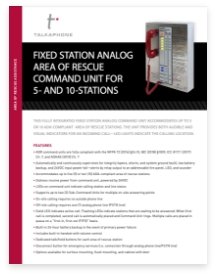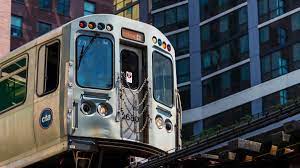 If you have used any means of public transportation recently, you probably noticed that security measures have been stepped up. In the aftermath of al-Qaida leader Osama bin Laden’s killing by U.S. forces, many Americans share the anxiety of a retaliatory terrorist attack.
If you have used any means of public transportation recently, you probably noticed that security measures have been stepped up. In the aftermath of al-Qaida leader Osama bin Laden’s killing by U.S. forces, many Americans share the anxiety of a retaliatory terrorist attack.
Recent history shows that attacks similar to the subway bombings in London, Madrid, Moscow, and even peaceful Minsk, are quite easy to orchestrate. The damage and casualties from those attacks are devastating, delivering a major blow to the economy and disrupting the fabric of life. So far, the United States has been fortunate enough to stop these attempts thanks to outstanding collaboration and efforts by our intelligence and task forces.
Most of TSA’s $8.1 billion 2011 fiscal budget, or about 71 percent, is spent on securing our airlines. Only about 1 percent is spent on securing surface transportation. Unlike airport security, which relies on high-tech scanning equipment and heavy video surveillance, transportation security is dependant on the eyes and ears of the general population.
Chicago Transit Authority is the second-largest transit agency in the nation, providing services to 1.7 million riders daily on bus and rail networks. In March of 2011 CTA was recognized by the DHS for achieving high scores in all categories of the security inspection program for transit.
Chicago Transit Authority is among many U.S. transit agencies that have adopted the “If You See Something, Say Something” campaign. “This campaign was borrowed from the MTA in 2002 and encourages riders to report any suspicious activity that they observe,” explained CTA President Richard Rodriguez. “In addition, CTA has participated and continues to participate in training for a number of scenarios using a range of programs.”
According to their website, “if you observe an unattended package, witness anything unusual or see someone acting suspiciously, alert a CTA employee or call 911 immediately.”
 Cell phone calls to 911 are the first thought; however, cell phones do not always work in the subway. Many transit agencies have chosen to deploy emergency phones, which are easily seen and only require a push of a button to connect to the correct security personnel.
Cell phone calls to 911 are the first thought; however, cell phones do not always work in the subway. Many transit agencies have chosen to deploy emergency phones, which are easily seen and only require a push of a button to connect to the correct security personnel.
Not only do they allow security personnel to instantly pinpoint the location of a caller, but they also provide the quickest way to contact security in case of an emergency. In addition, all CTA trains are equipped with a two-way intercom system, accessible to riders during an emergency.
CTA, and other systems, have also installed Emergency Phones, signage, lighting, emergency walkways in the subway tunnels themselves, so that in the event passengers must leave the train between stations in an emergency, they can quickly and easily notify security of the emergency event which caused them to leave the stopped train between stations. Since these emergency phones automatically notify security of their location, it is easier to tell passengers what to do and to dispatch assistance to the right location.
“We have blue lights affixed throughout the subway. Those blue lights are in a place where telephones are located. At those telephones, passengers have the ability to push one button and they are able to talk directly to our control center,” explains Myron Meredith in the public safety video produced by the CTA. “As they continue walking towards the emergency exit, there is a flashing blue light that will alert them to the location of that emergency exit, as well as the message that is playing that directs them to that emergency exit.”
Personnel who are on duty at CTA’s control center alert both the Chicago Fire Department and the Chicago Police Department to emergencies on CTA’s system. Fire and police personnel train alongside CTA staff to familiarize themselves with CTA subway tunnels and elevated structure. That way they can provide assistance to riders as quickly as possible when they respond to the scene.
Myron confirms the importance of the control center, “As field employees, we are in direct contact with our control center. Our control center has direct lines to the Police Department, the Fire Department and the OEMC [Office of Emergency Management and Communications].” CTA continues to drill various emergency scenarios with both Chicago Fire and Police Departments.
According to CTA President Rodriguez’s testimony on Capitol Hill, CTA’s latest initiative to combat crime and deter terrorism is the installation of the high-resolution digital security cameras. The network cameras allow CTA, the Chicago Police Department, Chicago’s Office of Emergency Management and Communication to gain a clear picture of an emergency situation and respond accordingly.
Securing the transition points from one transportation medium to another is also a must. Emergency phones are strategically placed in such locations to allow the general public to report any suspicious activity that might be taking place. This technology has been employed at various transit authorities in the United States, including the CTA’s Orange Line connection to the Chicago’s Midway Airport.
Parking garages and outdoor parking lots adjacent to airports also require due diligent approach when it comes to security. Proper access points planning, emergency phones, and surveillance all play an important role in terror plot prevention. CTA’s Park and Ride lots use a combination emergency phone towers and Pan-Tilt-Zoom surveillance cameras to quickly zero in on an emergency situation.
Layers upon layers of security play a critical role in creating a safe and secure environment. However, even the best of technologies fail to detect the malicious intent of a lone individual, be it a radicalized homegrown terrorist or member of a larger terrorist organization. We must learn to critically observe our environment, and then report anything out of the ordinary. We have the tools at our disposal; now it’s the matter of looking after each other.
By Samuel Shanes of Talkaphone Co. This article originally appeared in the September 2011 issue of the Security Technology Executive magazine.
TAP-In to Talkaphone and stay up-to-date with our latest news, case studies, white papers, and blogs. Click here to subscribe.












